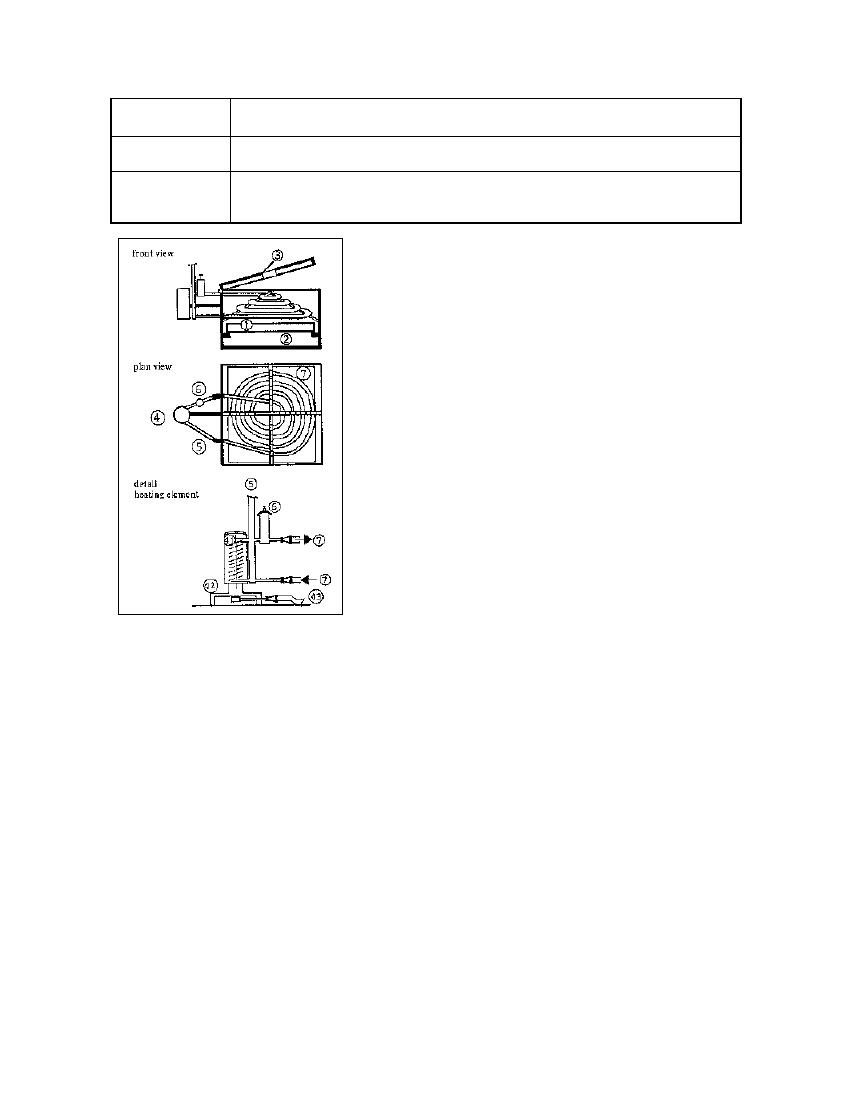
Ventilation:
Turning the
eggs:
Barren eggs:
A steady supply of fresh air (but not draft) is required to keep the CO2 content
below 0.8 %.
Incubating eggs must be turned as often as 8 times a day to keep the chicks
from sticking to the inside of the shell.
Unfertilized eggs and eggs containing dead chicks must be removed (danger of
infection). The eggs should be candletested once per week to ensure timely
detection.
Fig. 5.34: Schematic drawing of an incubator. 1 Incubating
chamber, 2 Removable tray, 3 Cover/ venting lid, 4 Heating
element, 41 Heating coil, 42 Burner, 43 Gas pipe, 5 Water
filler neck and expansion tank, 6 Vent valve, 7 Warming
element (plastic hose). Biogas consumption rate: 30-50 1/h
(Source: Wesenberg 1985)
Incubators
Incubators are supposed to imitate and maintain optimal conditions for hatching eggs. They are
used to increase brooding efficiency. Indirectly warm-water-heated planar-type incubators in which
a biogas burner heats water in a heating element for circulation through the incubating chamber are
suitable for operating on biogas. The temperature is controlled by ether-cell-regulated vents (cf. fig.
5.34).
Refrigerators
Absorption-type refrigerating machines operating on ammonia and water and equipped for
automatic thermosiphon circulation can be fueled with biogas.
Since biogas is only the refrigerator's external source of heat, just the burner itself has to be
modified. Whenever a refrigerator is converted for operating on biogas, care must be taken to
ensure that all safety features (safety pilot) function properly; remote ignition via a piezoelectric
element substantially increases the ease of operation.
73